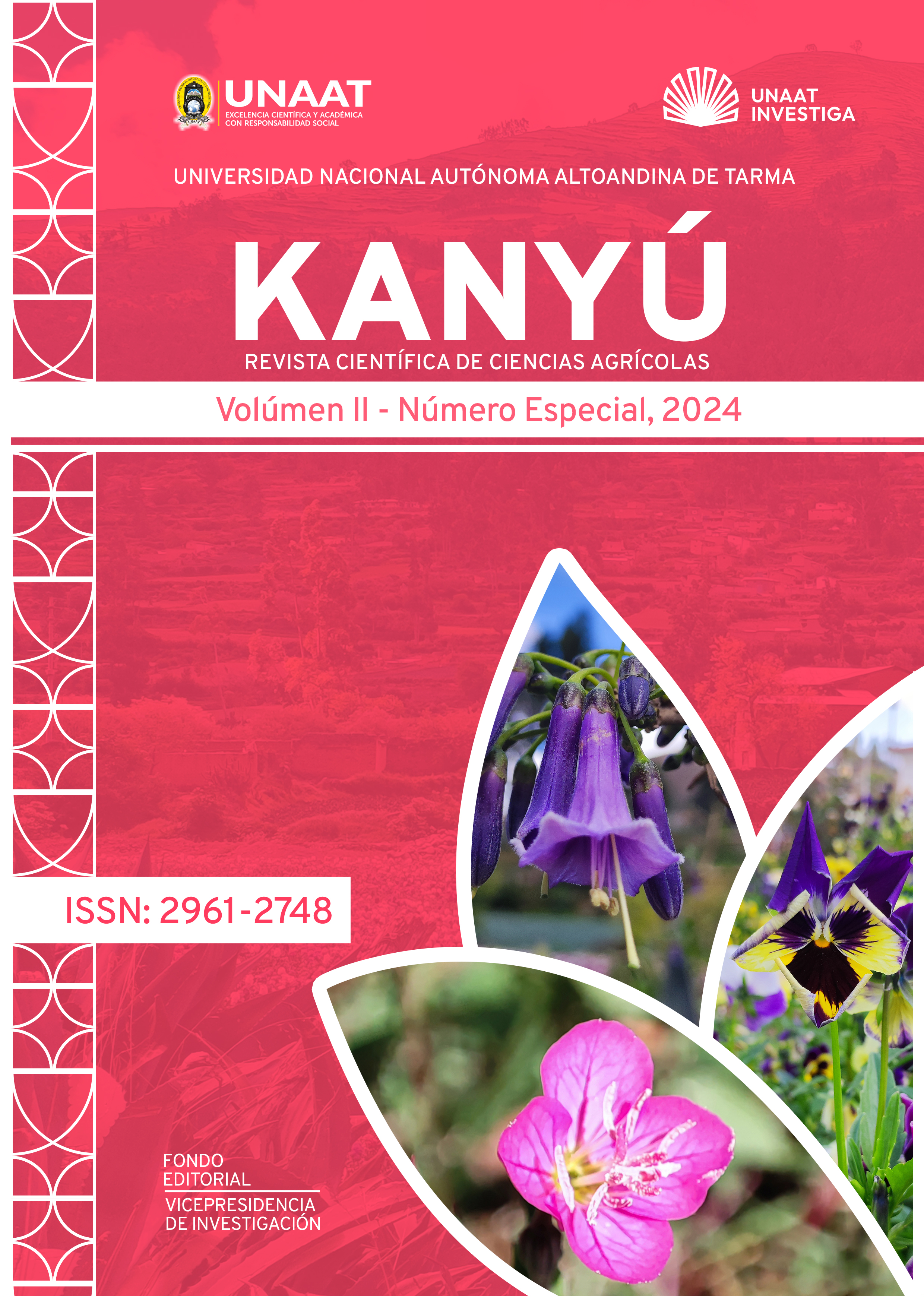El Efecto del calentamiento del hipoclorito de sodio en la limpieza y desinfección del canal radicular durante el tratamiento de endodoncia
Effect of sodium hypochlorite heating on root canal cleaning and disinfection during endodontic treatment
DOI:
https://doi.org/10.61210/kany.v2i3.86Palabras clave:
internal heating, intracanal heating, Activation of irrigating solutions, heating of irrigating solutions.Resumen
El objetivo de la investigación fue hacer una revisión de la literatura sobre el efecto de la técnica de calentamiento intracanal en la limpieza y desinfección del sistema de canales radiculares durante el tratamiento de endodoncia. La metodología consistió en una búsqueda sistemática en base de datos referentes como PubMed, SciELO, Scopus, Google Scholar y en el Registro Central de Ensayos Clínicos Cochrane, las siguientes palabras clave y conectores boleanos: (internal heating) OR (intracanal heating) OR (heating of irrigating solutions) OR (Activation of irrigating solutions) AND endodontics. Así mismo, se aplicaron estrategias de filtro para seleccionar artículos que aportaron de manera notable al objetivo de la investigación. El resultado del estudio concluye que el calentamiento intracanal del hipoclorito de sodio favorecería el resultado del tratamiento de endodoncia en vista que conseguiría una mayor actividad antibacteriana en menor tiempo, mayor capacidad y velocidad para disolver tejido orgánico, y disminución de la viscosidad del irrigante que permitiría mejorar el flujo, por lo tanto, mejor distribución dentro del conducto. En conclusión, el calentamiento intracanal del irrigante potencia cada una de estas propiedades que tiene el hipoclorito de sodio con fines de limpieza y desinfección del sistema de canales radiculares, inclusive dentro de túbulos dentinarios, por lo tanto, mejora la limpieza y desinfección.
Citas
Abou-Rass, M., & Oglesby, S. W. (1981). The effects of temperature, concentration, and tissue type on the solvent ability of sodium hypochlorite. In IOURNAL OF ENDODONTICS I (Vol. 7, Issue 8).
Ali, I. A., Layous, K., & Alzoubi, H. (2023). Evaluating the Effectiveness of Different Irrigant Activation Techniques in Removing the Smear Layer and Opening the Dentinal Canals: A Scanning Electron Microscopic Study. Cureus, 15(1). https://doi.org/10.7759/CUREUS.33961
Amato, M., Iandolo, A., Pantaleo, G., Abtellatif, D., Simeone, M., Lizio, A., Giudice, R. Lo, & Giudice, G. Lo. (2018). The IG- file use to Gauge the Apical Diameter in Endodontics: An In Vitro Study. The Open Dentistry Journal, 12(1), 638. https://doi.org/10.2174/1745017901814010638
Cunningham, W., & Joseph, S. (1980). Effect of temperature on the bactericidal action of sodium hypochlorite endodontic irrigant. Oral Surg. 50, 50(6), 569–571. https://pubmed.ncbi.nlm.nih.gov/6779248/#:~:text=When%20the%20in%20vitro%20bactericidal,time%20at%2037%20degrees%20C.
Cunningham, W. T., & Joseph, S. W. (1980). Effect of temperature on the bactericidal action of sodium hypochlorite endodontic irrigant. Oral Surgery, Oral Medicine, Oral Pathology, 50(6), 569–571. https://doi.org/10.1016/0030-4220(80)90443-0
Damade, Y., Kabir, R., Gaddalay, S., Deshpande, S., Gite, S., Bambale, S., & Dubey, N. (2020). Root canal debridement efficacy of heated sodium hypochlorite in conjunction with passive ultrasonic agitation: An ex vivo study. Journal of Dental Research, Dental Clinics, Dental Prospects, 14(4), 235–238. https://doi.org/10.34172/joddd.2020.040
Duggan, J. M., & Sedgley, C. M. (2007). Biofilm Formation of Oral and Endodontic Enterococcus faecalis. Journal of Endodontics, 33(7), 815–818. https://doi.org/10.1016/j.joen.2007.02.016
Iandolo, A., Amato, M., Dagna, A., Poggio, C., Abdellatif, D., Franco, V., & Pantaleo, G. (2018). Intracanal heating of sodium hypochlorite: Scanning electron microscope evaluation of root canal walls. Journal of Conservative Dentistry : JCD, 21(5), 569. https://doi.org/10.4103/JCD.JCD_245_18
Imura, N., Pinheiro, E. T., Gomes, B. P. F. A., Zaia, A. A., Ferraz, C. C. R., & Souza-Filho, F. J. (2007). The Outcome of Endodontic Treatment: A Retrospective Study of 2000 Cases Performed by a Specialist. Journal of Endodontics, 33(11), 1278–1282. https://doi.org/10.1016/j.joen.2007.07.018
Ingle, J., Bakland, L., & Baumgartner, C. (2008). Ingle’s Endodontics 6.
Jaiswal, S., Gupta, S., Nikhil, V., Bhadoria, A., & Raj, S. (2021). Effect of intracanal and extracanal heating on pulp dissolution property of continuous chelation irrigant. Journal of Conservative Dentistry, 24(6), 544–548. https://doi.org/10.4103/jcd.jcd_230_21
Konstantinidi, E., Psimma, Z., Chávez de Paz, L. E., & Boutsioukis, C. (2017). Apical negative pressure irrigation versus syringe irrigation: a systematic review of cleaning and disinfection of the root canal system. International Endodontic Journal, 50(11), 1034–1054. https://doi.org/10.1111/IEJ.12725
Landolo, A., Abdellatif, D., Amato, M., Pantaleo, G., Blasi, A., Franco, V., & Neelakantan, P. (2020). Dentinal tubule penetration and root canal cleanliness following ultrasonic activation of intracanal-heated sodium hypochlorite. Australian Endodontic Journal, 46(2), 204–209. https://doi.org/10.1111/aej.12393
Landolo, A., Amato, M., Dagna, A., Poggio, C., Abdellatif, D., Franco, V., & Pantaleo, G. (2018). Intracanal heating of sodium hypochlorite: Scanning electron microscope evaluation of root canal walls. Journal of Conservative Dentistry, 21(5), 569–573. https://doi.org/10.4103/JCD.JCD_245_18
Landolo, A., Simeone, M., Orefice, S., & Rengo, S. (2017). 3Dcleaning,aperfectedtechnique:thermalprofileassessmentofheatedNaOCl. Giornale Italiano Di Endodonzia, 31(1), 58–61. https://doi.org/10.1016/j.gien.2017.02.001
Metzger, Z., Solomonov, M., & Kfir, A. (2013). The role of mechanical instrumentation in the cleaning of root canals. Endodontic Topics, 29(1), 87–109. https://doi.org/10.1111/etp.12048
Montis, N., Cotti, E., Noto, A., Fattuoni, C., & Barberini, L. (2019). Salivary Metabolomics Fingerprint of Chronic Apical Abscess with Sinus Tract: A Pilot Study. Scientific World Journal, 2019. https://doi.org/10.1155/2019/3162063
Nair. (2004). PATHOGENESIS OF APICAL PERIODONTITIS AND THE CAUSES OF ENDODONTIC FAILURES. Rev Oral Biol Med.
Neelakantan, P., Romero, M., Vera, J., Daood, U., Khan, A. U., Yan, A., & Cheung, G. S. P. (2017). Biofilms in Endodontics—Current status and future directions. In International Journal of Molecular Sciences (Vol. 18, Issue 8). MDPI AG. https://doi.org/10.3390/ijms18081748
Peters, L. B., Wesselink, P. R., Buijs, J. F., & van Winkelhoff, A. J. (2001). Viable Bacteria in Root Dentinal Tubules of Teeth with Apical Periodontitis.
Ricucci, D., & Siqueira, J. F. (2010). Biofilms and apical periodontitis: Study of prevalence and association with clinical and histopathologic findings. Journal of Endodontics, 36(8), 1277–1288. https://doi.org/10.1016/j.joen.2010.04.007
Rossi-Fedele, G., & De Figueiredo, J. A. P. (2008). Use of a bottle warmer to increase 4% sodium hypochlorite tissue dissolution ability on bovine pulp. Australian Endodontic Journal, 34(1), 39–42. https://doi.org/10.1111/j.1747-4477.2007.00110.x
Shahriari, S., Kasraei, S., Roshanaei, G., Karkeabadi, H., & Davanloo, H. (2017). Efficacy of Sodium Hypochlorite Activated With Laser in Intracanal Smear Layer Removal: An SEM Study. Journal of Lasers in Medical Sciences, 8(1), 36. https://doi.org/10.15171/JLMS.2017.07
Siqueira, J. F., Pérez, A. R., Marceliano-Alves, M. F., Provenzano, J. C., Silva, S. G., Pires, F. R., Vieira, G. C. S., Rôças, I. N., & Alves, F. R. F. (2018). What happens to unprepared root canal walls: a correlative analysis using micro-computed tomography and histology/scanning electron microscopy. International Endodontic Journal, 51(5), 501–508. https://doi.org/10.1111/IEJ.12753
Siqueira, J. F., & Rôças, I. N. (2008). Clinical Implications and Microbiology of Bacterial Persistence after Treatment Procedures. In Journal of Endodontics (Vol. 34, Issue 11). Elsevier Inc. https://doi.org/10.1016/j.joen.2008.07.028
Stojicic, S., Zivkovic, S., Qian, W., Zhang, H., & Haapasalo, M. (2010a). Tissue dissolution by sodium hypochlorite: Effect of concentration, temperature, agitation, and surfactant. Journal of Endodontics, 36(9), 1558–1562. https://doi.org/10.1016/j.joen.2010.06.021
Stojicic, S., Zivkovic, S., Qian, W., Zhang, H., & Haapasalo, M. (2010b). Tissue dissolution by sodium hypochlorite: Effect of concentration, temperature, agitation, and surfactant. Journal of Endodontics, 36(9), 1558–1562. https://doi.org/10.1016/j.joen.2010.06.021
Archivos adicionales
Publicado
Cómo citar
Licencia
Derechos de autor 2025 Sergio Michel Estrella Chaccha

Esta obra está bajo una licencia internacional Creative Commons Atribución-NoComercial-CompartirIgual 4.0.
Eres libre de:
- Compartir — copiar y redistribuir el material en cualquier medio o formato
- Adaptar : remezclar, transformar y construir sobre el material.
Bajo los siguientes términos:
-
Reconocimiento : debe otorgar el crédito correspondiente, proporcionar un enlace a la licencia e e indicar si se realizaron cambios.
-
No comercial : no puede utilizar el material con fines comerciales.
-
ShareAlike : si remezcla, transforma o construye a partir del material, debe distribuir sus contribuciones bajo la misma licencia que el original.










